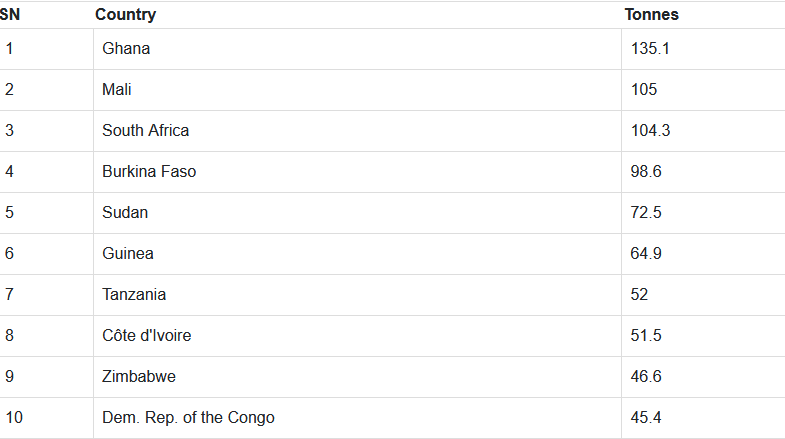Gold is now seen as a major commodity due to its increasing importance as a secure investment. Prices have surged worldwide, reaching $2,468.40 per troy ounce in June 2024.
The World Gold Council (WGC) reports that global gold production has consistently risen over the past four years, increasing by 12%.
According to the US Geological Survey, global gold production reached 3,000 metric tons (MT) in 2023, contributing approximately $38.0 billion directly and indirectly to the host nations.
Africa is actively participating in global gold production. West Africa is recognised as one of the world’s fastest-growing regions in terms of gold production, currently accounting for about half of the gold produced on the continent.
The following data from the WGC highlights the African countries that have been the largest gold producers from 2010 to the present:

Apart from oil, gold stands as Africa’s second-largest export. The continent plays a significant role in global gold production, demonstrating a substantial 22% increase between 2010 and 2018.
The WGC’s report, “The Social and Economic Contribution of Gold Mining,” attributes the growth during this period primarily to increased production in Africa and the Commonwealth of Independent States (CIS).

Despite contributing approximately 0.5% of global gold production, Nigeria’s absence from the list reflects the government’s delayed entry into the regulated mining market.
According to Agusto Research, the Nigerian government initiated major developments in the gold mining industry in 2009.
With Nigeria’s gold reserves valued at 757,000 oz and estimated to be worth up to $1.4 billion, the potential for growth in the industry is significant. As the government increases investment in the sector, there are favourable prospects for reinvigorating the industry and significantly expanding the global production market share.


